How Art in Nature Heals: A Glimpse into Eco-Art Therapy
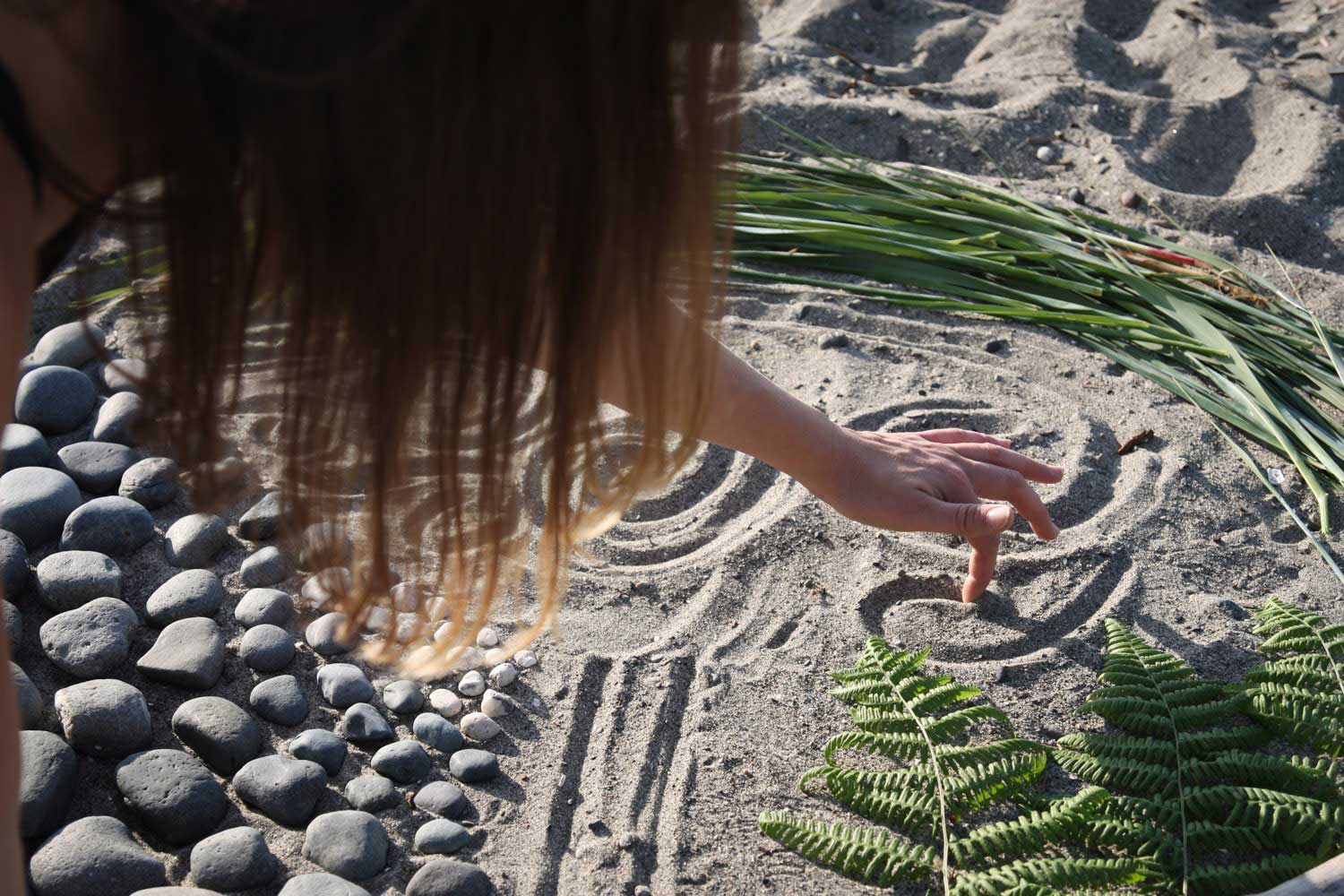
How Art In Nature Heals:
A Glimpse Into Eco-Art Therapy
Words and Photography by Laura Hughes
“Close your eyes. Think about the last time you were outside.”
This is the introduction Megan Bixel, highly inquisitive and passionate art therapist, uses to talk to her clients about discovering intentional healing in the outdoors.
I don’t know about you, but when I think about being outside, all kinds of beautiful things happen deep within.
With the ongoing hustle of a career, urban living, and social technology, I find myself in a constant state of remembering to slow things down, and in a constant pursuit of how to achieve it. The answer consistently resides within the outdoors. After breathing in evergreen air, or feeling the tides tickle my toes, I always regain my sense of purpose and belonging. Megan Bixel knows all about this approach because she uses it with her clients on a regular basis.
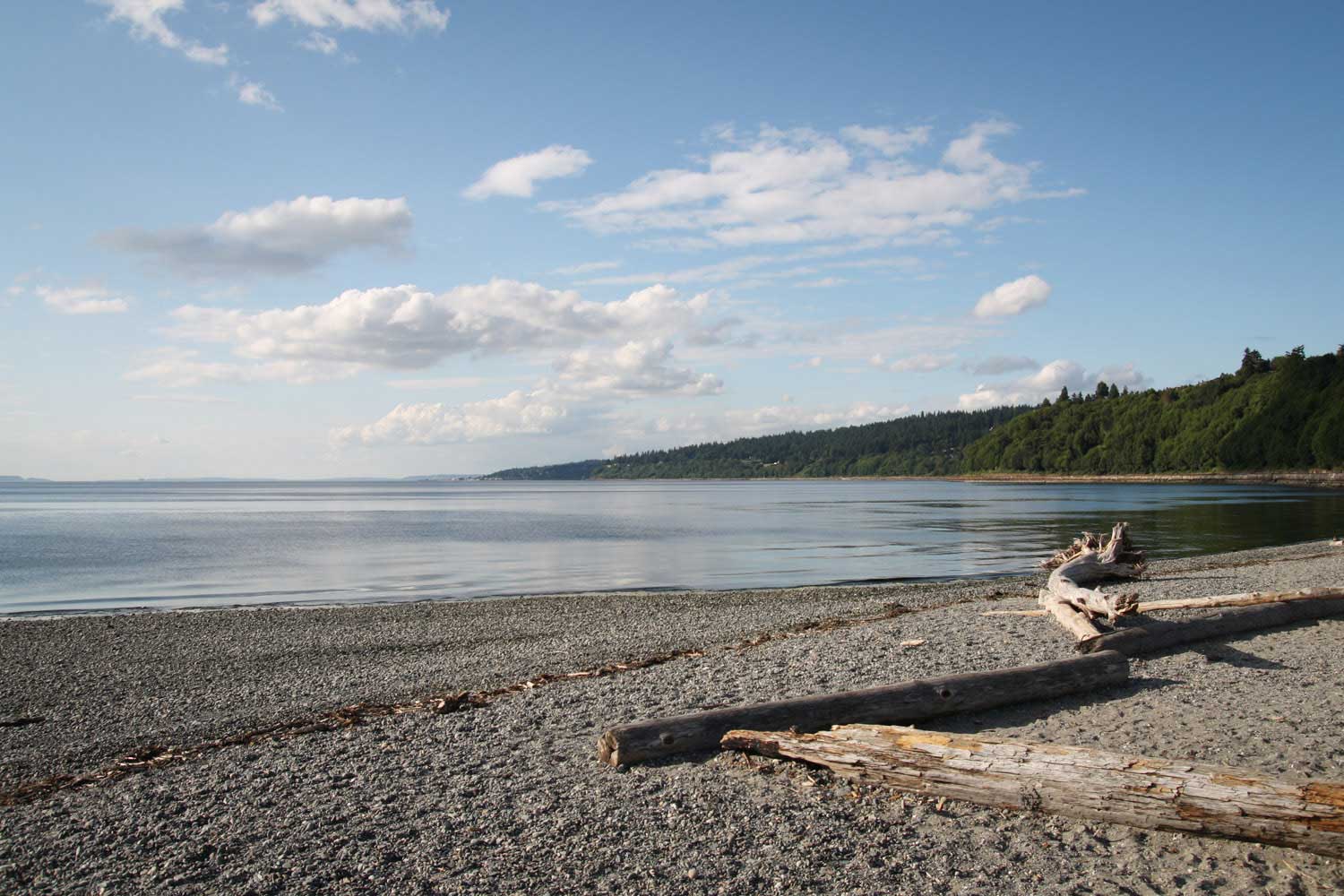
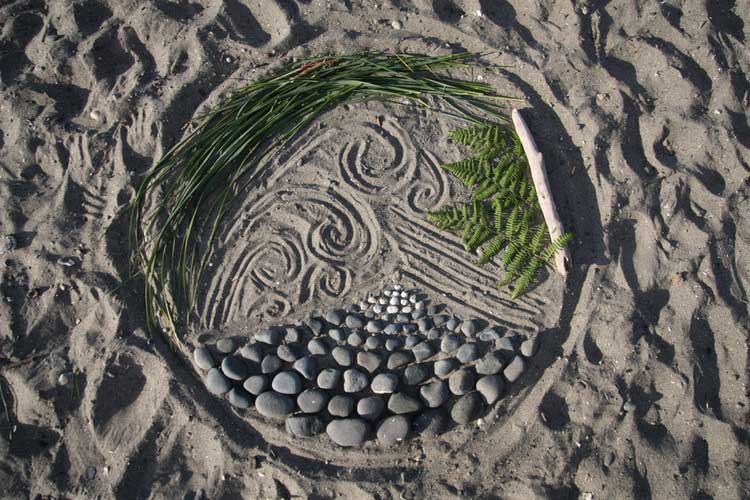
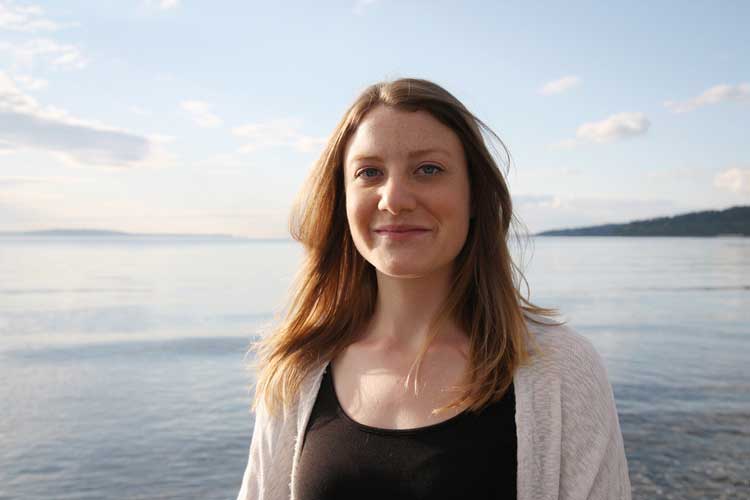
Megan’s therapy sessions often use eco-art therapy, where she encourages art practices using a client’s natural surroundings to bring calm, process grief or trauma, and develop coping skills. Naturally intrigued, I asked to follow her outside to learn more about her practices and dig a little deeper into the philosophy behind this powerful, accessible method.
There is nothing stopping us from being artists in the outdoors. There is only healing to be found if we allow our bodies and minds to access it.
We traveled to a local beach, warm air and blue skies holding us in their gaze as we meandered around the forest and shoreline. Megan thoughtfully wandered through the trees picking up a variety of flora and other natural treasures in the underbrush. Her objective: to have no objective. Just go wherever the heart and mind want to, and make something with it. As Megan carefully gathered each find from the ground, it felt like she was collecting treasure: a true state of abundance and awe.
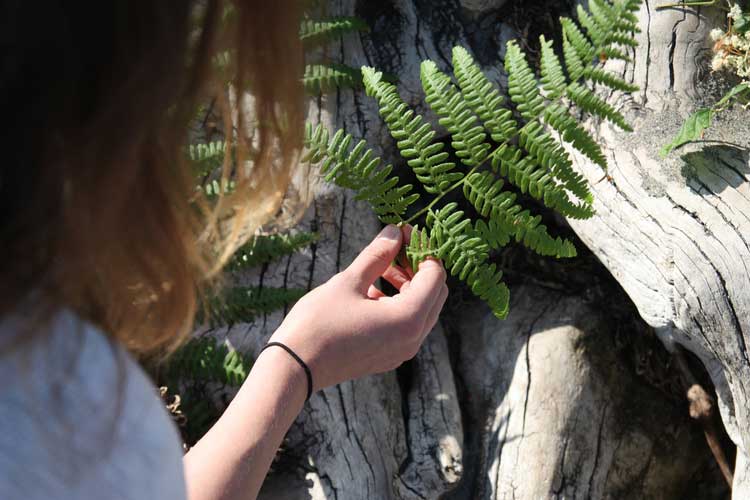
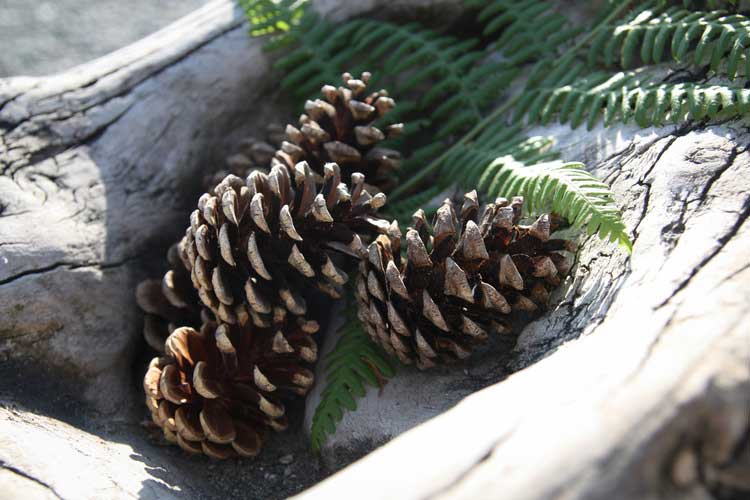
On the sandy shore, Megan drew a large mandala to begin the next stage of her work. Rocks, tall grasses, and ferns joined the mix, but nothing else came with her. No paintbrush, no pen. Just the beautiful resources of our little Pacific Northwest beach. As she continued to quietly create, a sense of calm swept over me.
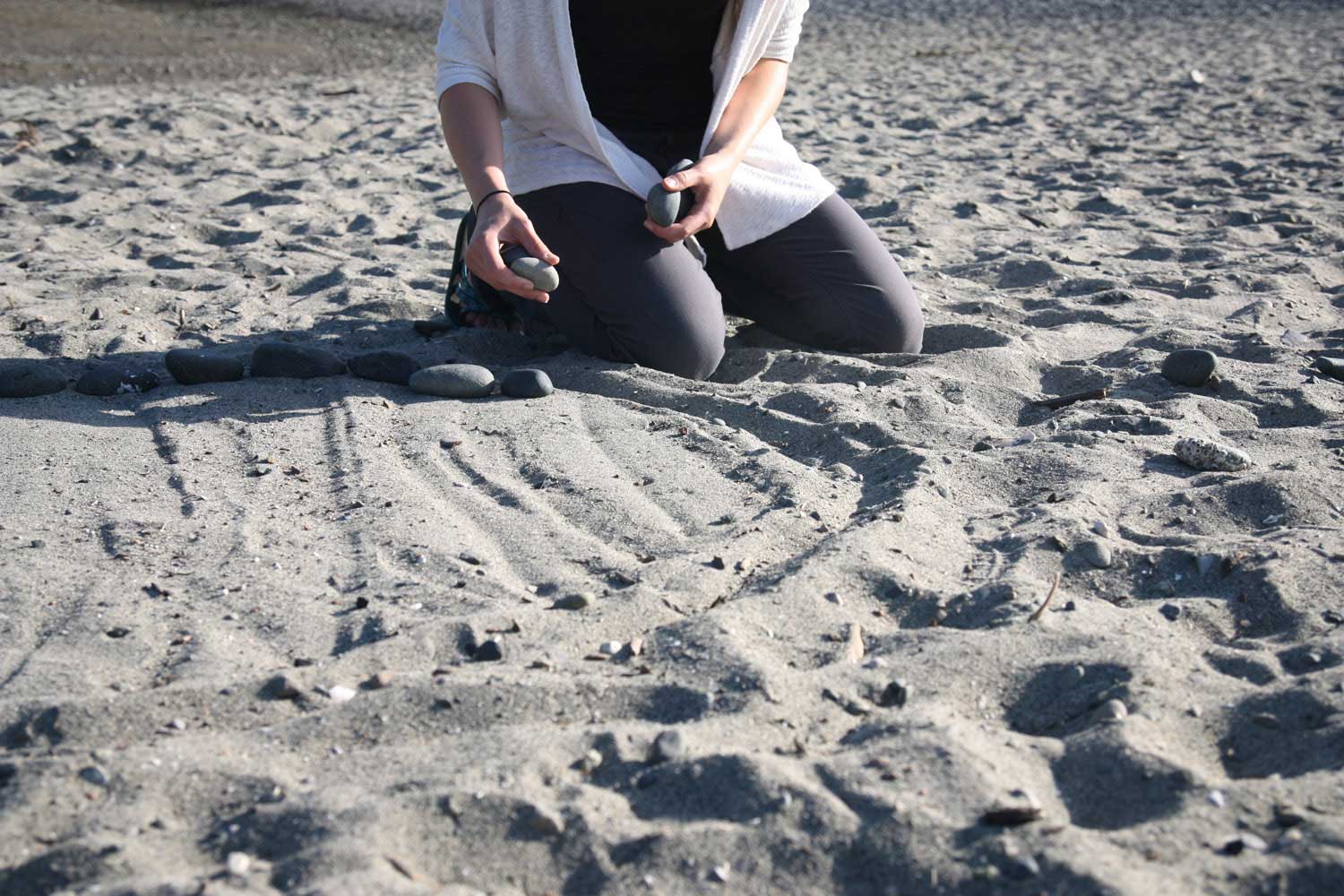
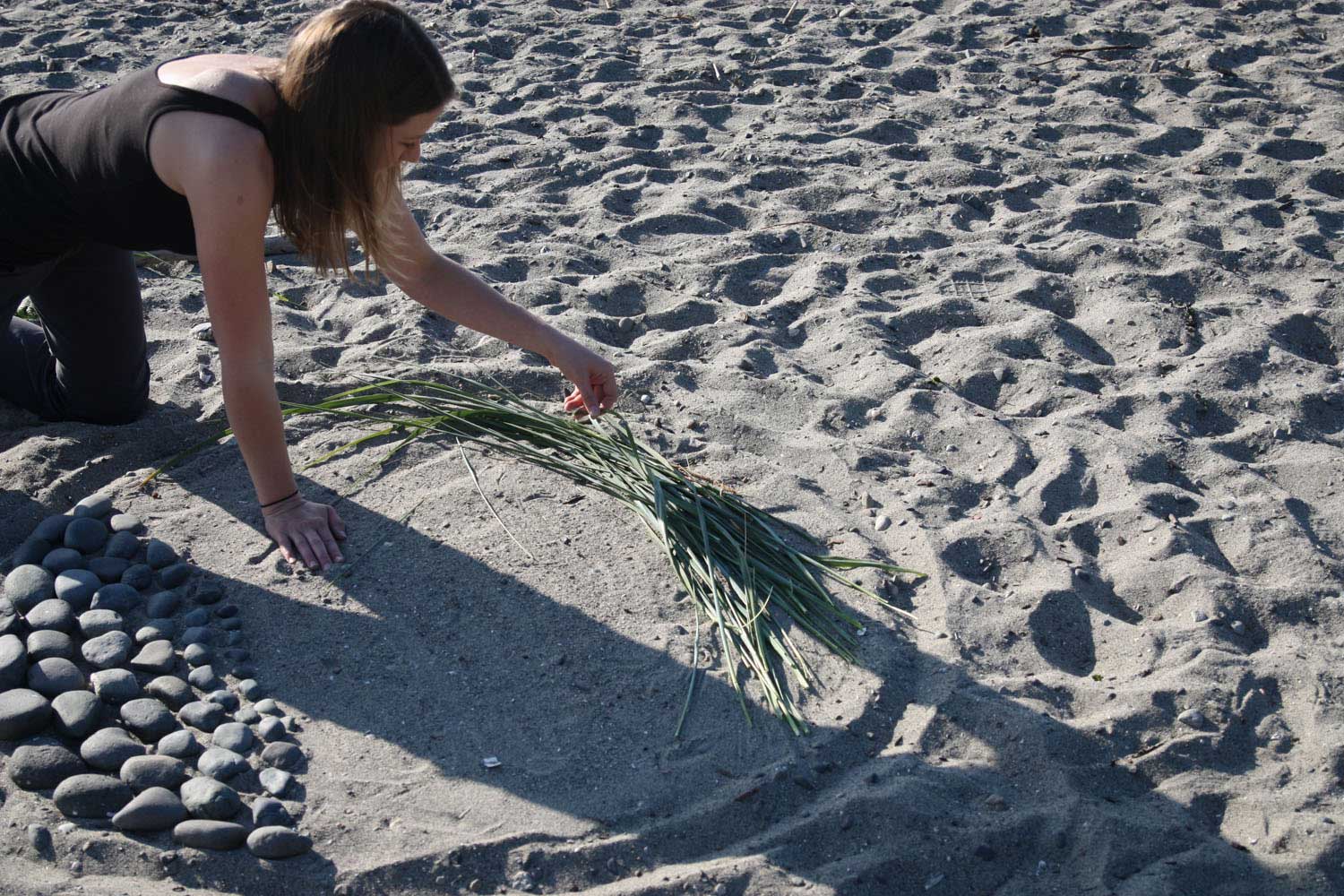

I watched the birds skip along the low tide. I let my eyes take in the early evening light. I felt fresh air come through my nose and rush into my veins. This is now a moment I will look back to the next time I admire shells on a beach, look for buttercups in a grassy field, or sit among cairns high up in the mountains. There is nothing stopping us from being artists in the outdoors. There is only healing to be found if we allow our bodies and minds to access it.
Afterward, blissed out on the whole experience and eager to know more, Megan and I chatted about eco-art therapy:
What exactly is eco-art therapy?
Eco therapy, essentially, is counseling in the outdoors. In eco therapy, there is generally an emphasis on mindfulness and impermanence, making it effective for managing grief, loss, and building coping skills. Eco therapy is something you can always turn to no matter who is around. Art therapy is an approach that provides a different way of accessing trauma. By creating art, emotions can be externalized, which opens the door to processing feelings.
Eco-art therapy is the blend of using art therapy practices in an eco therapy setting, utilizing the natural resources at hand to create.
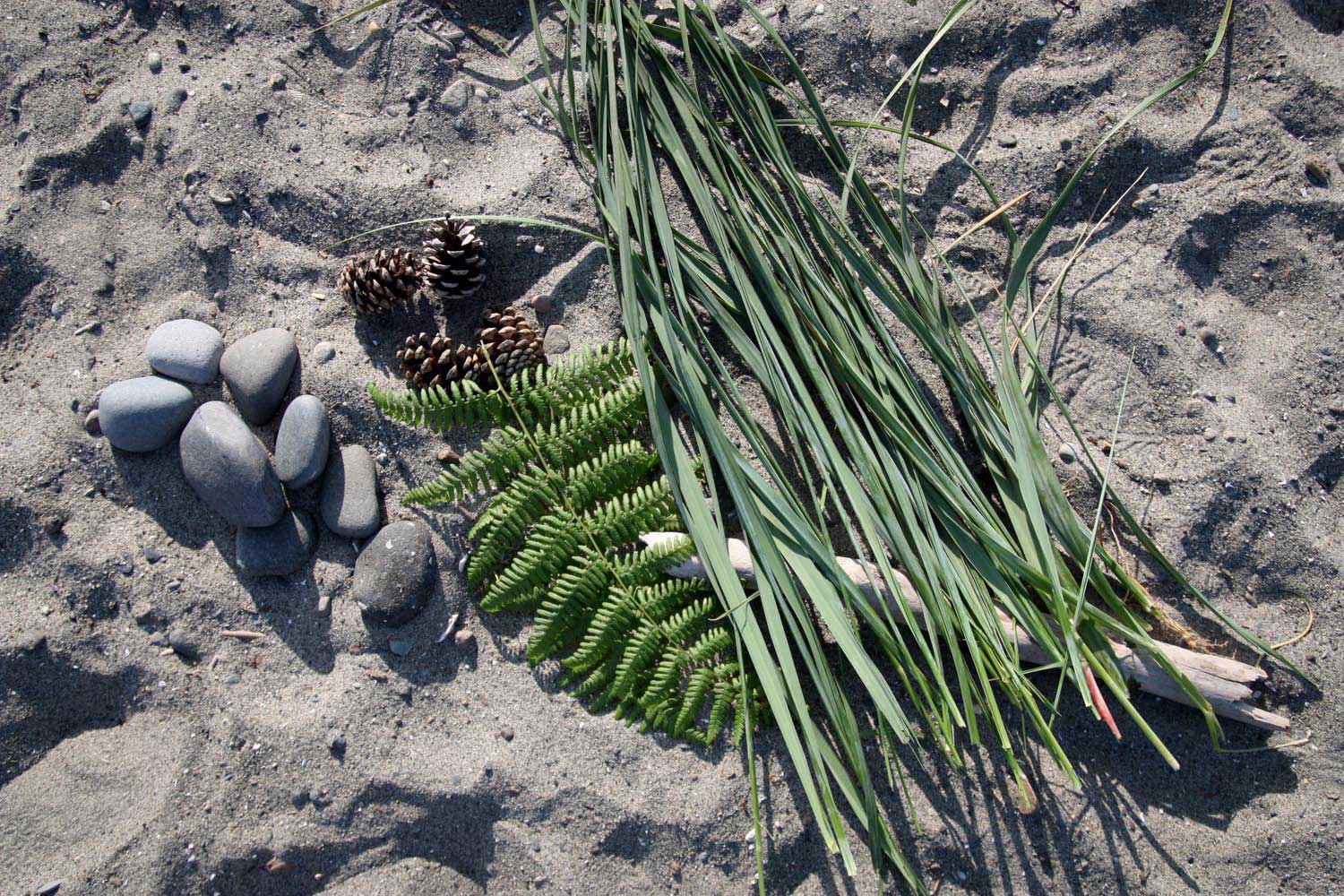
Why do you find eco-art therapy especially compelling?
When you’re experiencing anxiety or trauma, your brain and sympathetic nervous system are continually stimulated and it’s harder to make decisions because you’re in a state of reacting. When you’re in that space, you can’t do the emotional work to process. By contrast, when you’re outside, you’re calmer – it’s easier to breathe, easier to settle out everything that’s going on in your brain, which allows you to get to a place of processing emotions.
Using art as a way to externalize emotions can be intimidating to start with, so it’s nice to be outside with clients to give them the opportunity to play and create, without fear that judgment will be passed on their work. And it’s free, so eco-art therapy is accessible any time, for pretty much anyone.
What’s it like the first time you introduce a client to eco-art therapy?
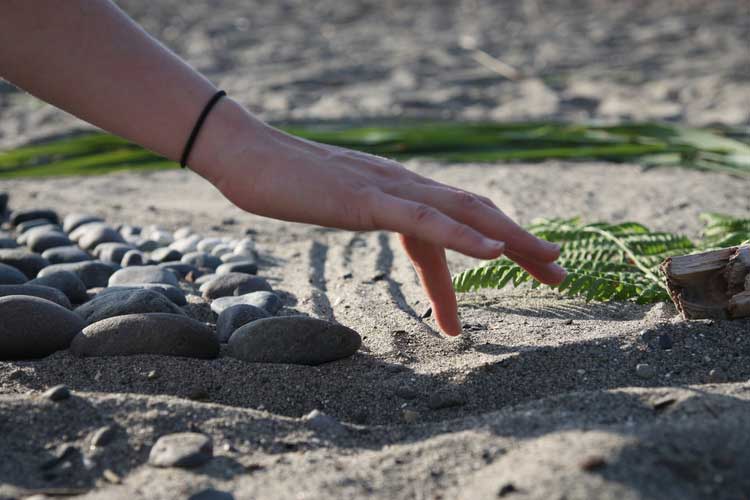 The first time you introduce clients to any type of therapy it can be awkward because you’re trying something new. However, after 5-10 minutes clients typically focus and realize that there is no judgment with eco-art therapy activities. They don’t have to make anything new. They’re just piecing things together that already exist.
The first time you introduce clients to any type of therapy it can be awkward because you’re trying something new. However, after 5-10 minutes clients typically focus and realize that there is no judgment with eco-art therapy activities. They don’t have to make anything new. They’re just piecing things together that already exist.
Often, when clients finish an eco-art therapy session, I hear reflections like, “I didn’t know I could do this,” and, “It’s just nice to be outside… I think I’m going to do more of this in my spare time.” They see the value in being outside and make the connection that they can do eco-art therapy activities any time to find calm or cope with the challenges they’re facing.
How do you personally find nature to be healing?
In so many ways. My mood is definitely impacted by nature. If it’s stormy or grey outside, I can allow myself to sit with whatever personal storm I’m in and process the feelings, enjoying nature’s reflection of where I am. When it’s sunny outside, the light gives me a lot of energy and I feel more motivation and a sense of accomplishment with my day-to-day. With this self awareness, I can lean into my surroundings to further my own self reflection in a productive way by using my environment.
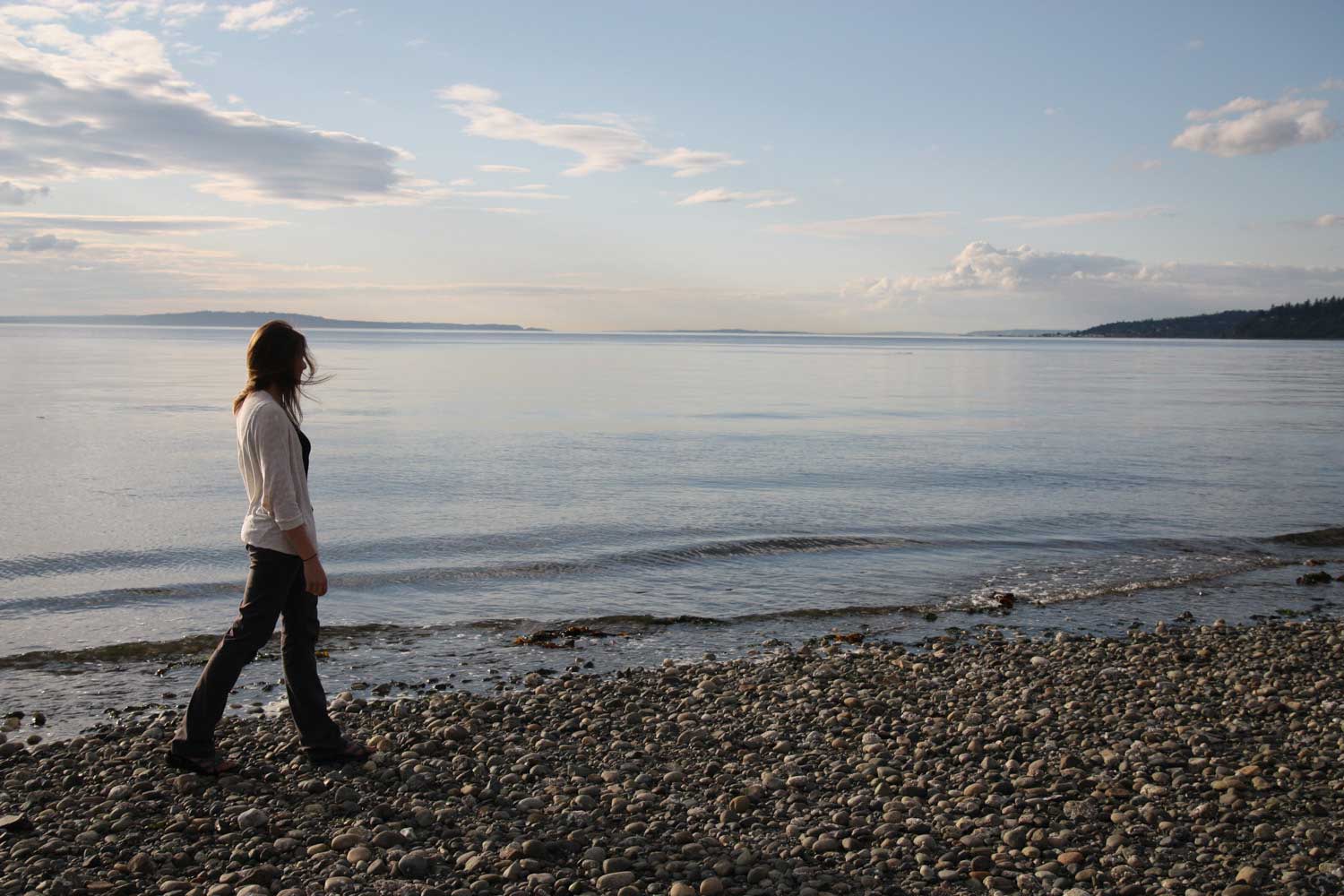
Do you need a therapist to do eco-art therapy?
There are many benefits to having a therapist with you for your eco-art therapy practices. They are trained to be your sounding board. They allow you to be more contained and seen in the process. They will also provide stability and empathy so you’re not alone in it, and can provide additional resources as needed.
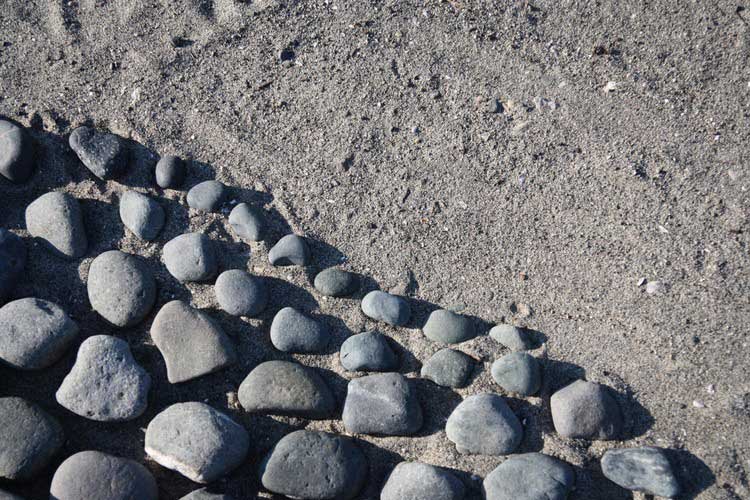 That being said, I do think you can do a lot of your own personal work without the help of a therapist. It all comes down to reflection. You don’t need to have a goal in mind. You can. But if you’re having a bad day and you want to feel a little bit better, you can draw a circle and fill it with things you find outside. You can press flowers and plants in books.
That being said, I do think you can do a lot of your own personal work without the help of a therapist. It all comes down to reflection. You don’t need to have a goal in mind. You can. But if you’re having a bad day and you want to feel a little bit better, you can draw a circle and fill it with things you find outside. You can press flowers and plants in books.
With or without a therapist, it’s about the process. It’s all up to you. You’re making all of these decisions, and you get to have fun. Revisit that imaginative part you have within you – it can be so rewarding. Notice things that come in your mind while you’re creating something.
Lean into the process and notice what comes up as you’re in it. When you’re finished, know that you spent time focused on building something just for you. That can be healing in itself.
Laura Hughes is a Photographer and consistent contributor for She Explores. Find her on Instagram and follow her adventures through her blog, The Vanna Project.
[…] hands. To take someone on a journey of magical stories in my painting. To bring smiles, excitement, therapeutic feeling in someone out there. To express the beauty, the best, the positivity of my society to the […]
[…] https://she-explores.com/features/how-art-in-nature-heals/ […]
Thanks so much for sharing. I am an art therapist and currently doing a group related to nature and trees. It has been great and I had no idea that there were sights that addressed this approach. Not like I am the genius who came up with this. No idea is a new one.
Dianne Papes
Hello,
I found your blog while searching for eco-art ideas for our summer camp programming. What a treasure! I work for Artist Boat, an Environmental Conservation non-profit in Galveston, TX. If you are curious about what we do, you may visit http://www.artistboat.org. We have a World Ocean Day Festival every year. I would love for you to entertain the idea of doing a workshop on the beach next year around June 8th. Im so glad i found your site, it’s lovely! Ally